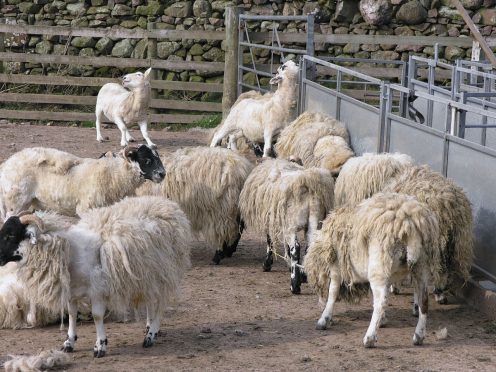More than 10,000 sheep in Shetland have been treated for sheep scab as part of efforts to halt the spread of the disease on the islands.
An islands-wide treatment programme, which involved dipping 10,667 sheep, was started after an imported ram tested positive for sheep scab a month ago.
Shetland Islands Council said all flocks which potentially came into contact with the imported ram, either through a shared boundary or in transit, will now either have been treated or begun a programme of testing.
The local authority is now urging all farmers and crofters on the islands to remain vigilant and report any signs of the disease to Shetland Vets on 01595 810456.
Sheep scab, also known as Psoroptic mange, is caused by an infestation of a parasitic mite named Psoroptes ovis
Early signs of the disease include rubbing, scratching, biting at the flanks, and tags of fleece pulled out.
In more advanced cases, areas of bare and raw red skin or scabs become visible on the sheep as well as weight loss.
Farmers are also urged to investigate any sheep that have been treated with a pour-on product for lice or keds, but still remain itchy.
“I would like to thank the Shetland farming community for their help and co-operation with the sheep scab control operation, and most especially to thank those farmers that have gathered their sheep for testing and treatments,” said Shetland Islands Council veterinary adviser, Hilary Burgess.
“As a precaution, we continue to advise that sharing of equipment between flocks should be kept to a minimum and equipment should be thoroughly cleaned and disinfected between holdings.”
She added: “The use of separate protective clothing is also strongly recommended when working on different flocks or, at the very least, careful cleaning and disinfection of clothing between flocks.”
Shetland Islands Council said further surveillance using blood testing will be available during the summer.
